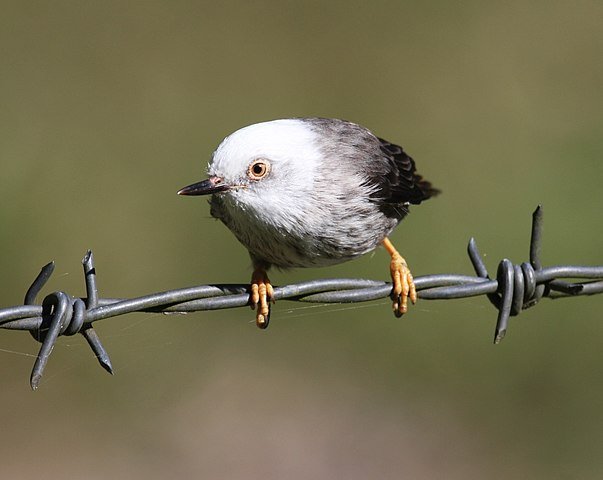Adorable Mobsters
"Varied Sittella" by Andrew Allen, CC BY 4.0, via iNaturalist
Neosittidae
by Inspector Barry Mins on October 24, 2023Hey kids, welcome back to our series on the mysteries of created kinds. This week we head south to the Australia region to meet a small family of climbing birds.

This week’s kind is found exclusively in Australia and the Indo-Papuan island of New Guinea. There are only three species, two of which are restricted to New Guinea and the third to Australia. They are common birds in their range, often assembling in large flocks. The Australian species has several subspecies, and these subspecies will interbreed where their ranges overlap.1
These birds respond to perceived threats by mobbing the threat.
They hunt insects on tree trunks and sometimes use rolled strips of bark to help them grip their perch as they probe the trunk for insects.2 They will respond to perceived threats by mobbing the threat, even when it is a human.3 They will roost together in communal groups, huddling together in an order determined by their internal social status.4
Male and females look different in at least one species in this kind. Both males and females are about equally colorful, just display different patterns. They breed in small groups of roughly four–five individuals, though pairs are not uncommon.5 In a cone-shaped nest, they lay small eggs that hatch after roughly three weeks incubation.
Has anyone figured it out yet? This week’s kind is the Neosittidae—the Sittella kind. Their subspecies vary widely in pattern and may be on the way to becoming new species. In 10 years, there may be more than three species in this kind. Stay tuned for next week when we meet a group of sub-Saharan African songbirds, several of which look quite grumpy (just like me).
Try out this fun crossword!
Clue
Your clue for the week is:
There are 18 species in this kind. Many of the species were formerly classified in other families.
Ask a Question
Have you ever had a question about created kinds but didn’t know who to ask? Have you ever wanted to learn more about your favorite kind? Well, now you can! You can ask me, Inspector Barry Mins, a question! Have your parents help you fill out this form, and you might get your question answered in my column! If you have any questions about created kinds, feel free to send them my way!
Footnotes
- L. L. Short, R. Schodde, R. A. Noske, and J. F. M. Horne, “Hybridization of ‘White-Headed’ and ‘Orange-Winged’ Varied Sittellas Daphoenositta chrysoptera leucocephala and D.c. chrysoptera (Aves: Neosittidae), in Eastern Australia,” Australian Journal of Zoology 31, no. 4 (1983): 517–531, https://www.researchgate.net/profile/Richard-Noske/publication/248901441_Hybridization_of_'White-headed'_and_'Orange-winged'_VAried_Sittellas_Daphoenositta_chrysoptera_leucocephala_and_Dc_chrysoptera_Aves_Neosittidae_in_Eastern_Australia/links/5864481508ae6eb871ad05e3/Hybridization-of-White-headed-and-Orange-winged-VAried-Sittellas-Daphoenositta-chrysoptera-leucocephala-and-Dc-chrysoptera-Aves-Neosittidae-in-Eastern-Australia.pdf.
- Richard A. Noske, “Left-Footedness and Tool-Using in the Varied Sittella Daphoenositta chrysotera and Crested Shrike-Tit Falcunculus frontatus,” Corella 9, no. 2 (September 1985): 63–64, https://absa.asn.au/wp-content/uploads/2021/09/Cor-Vol-9-Pg63-64_Left-Footedness_Tool-Using_Sittella.pdf.
- Mike Newman, “Varied Sittella Involved in Distraction Displays During June,” The Whistler 1 (2007): 52, https://www.hboc.org.au/wp-content/uploads/The-Whistler-1_2007_Sec.pdf#page=56.
- R. A. Noske, “Huddle-Roosting Behavior of the Varied Sittella Daphoenositta chrysoptera in Relation to Social Status,” Emu 85, no. 3 (1985): 188–194, https://www.publish.csiro.au/MU/MU9850188.
- R. A. Noske, “Social Organization and Nesting Biology of the Cooperatively-Breeding Varied Sittella Daphoenositta chrysoptera in North-Eastern New South Wales,” Emu 98, no. 2 (1998): 85–96, https://www.publish.csiro.au/MU/MU98009.
- © 2024 Answers in Genesis
- Privacy Policy
- Contact
- About


